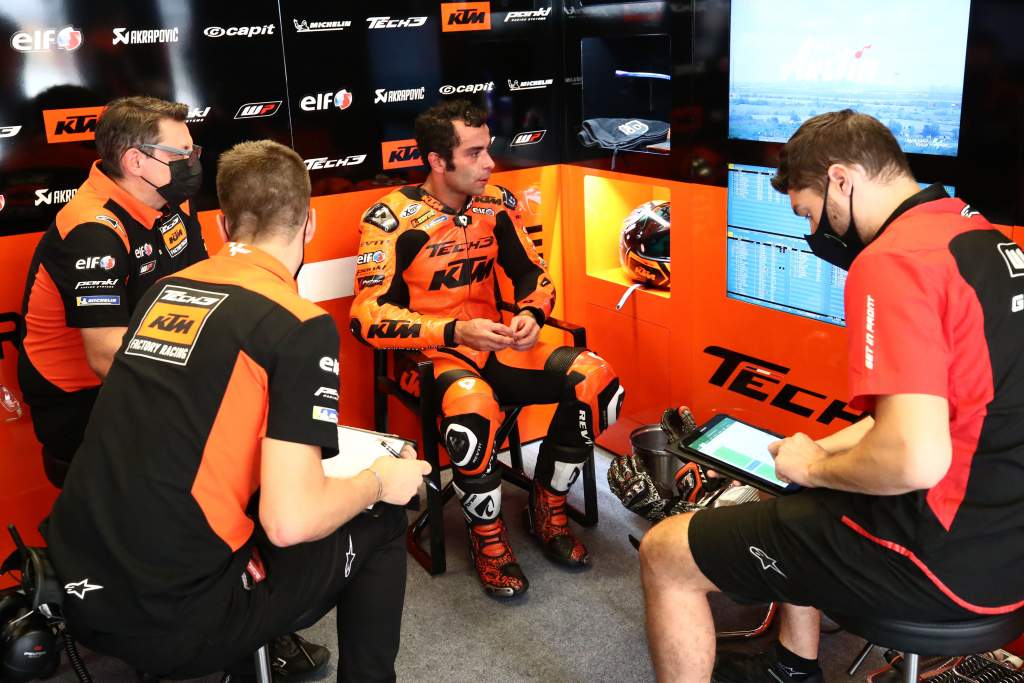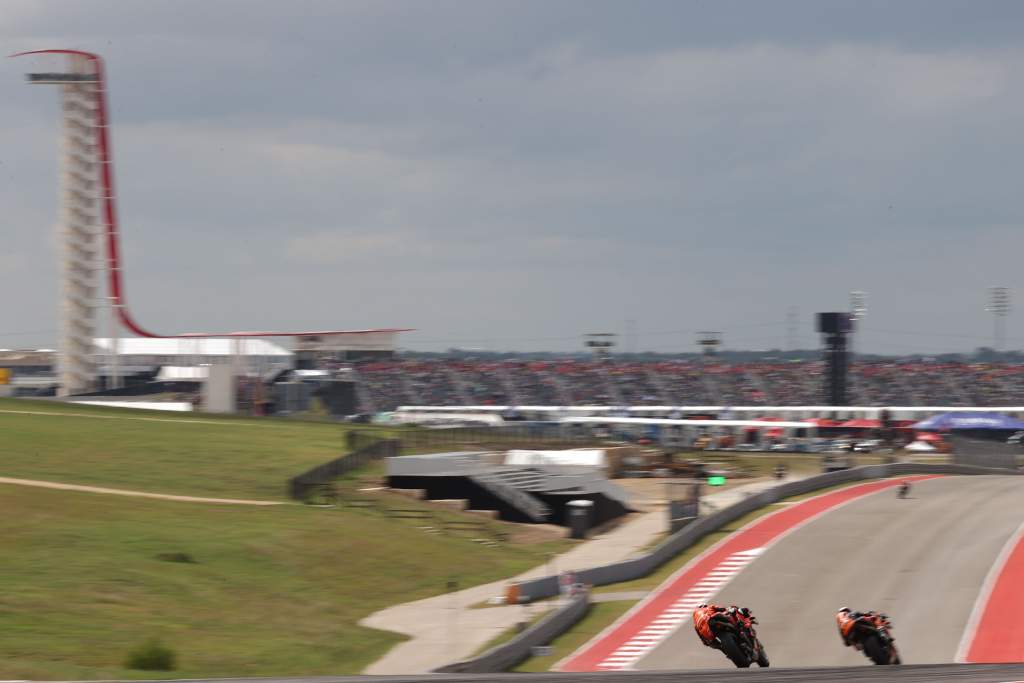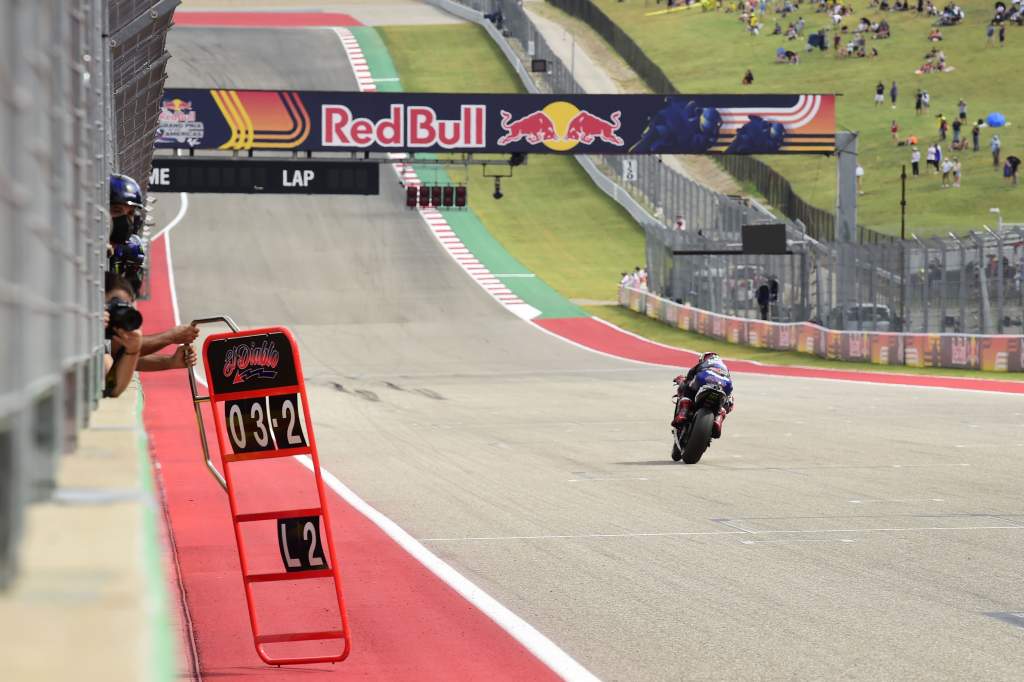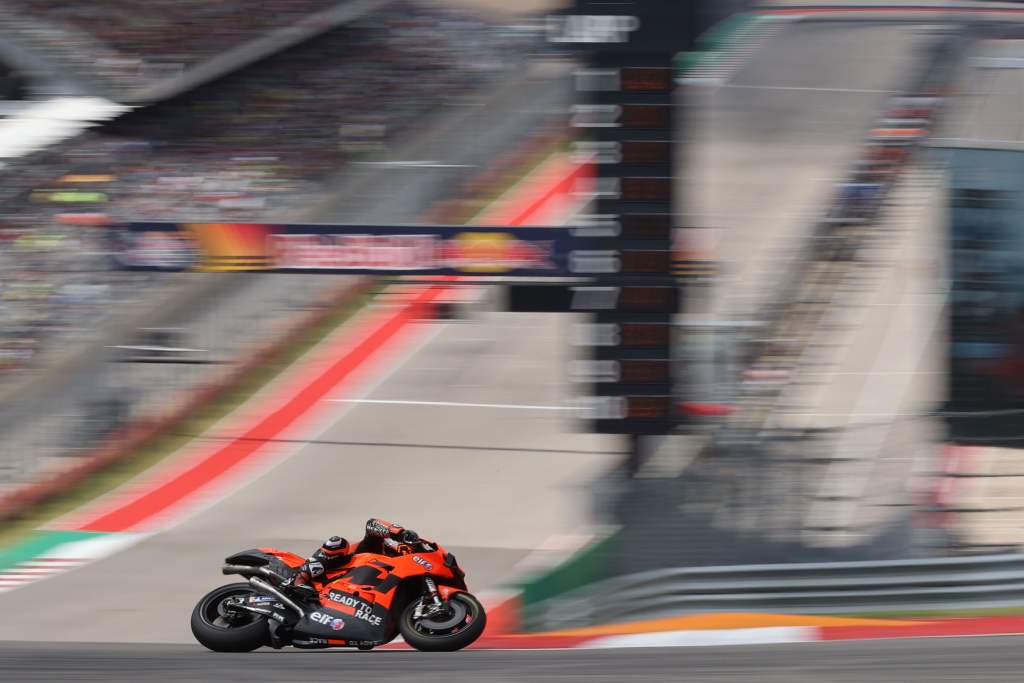The state of the surface at Austin’s Circuit of the Americas has dominated the MotoGP weekend, with fresh controversy and even threats of a boycott have erupting out of paddock over the amount and severity of the bumps and ripples plaguing the venue.
An agreement between the riders, promoter Dorna and COTA should at least mean the Turn 2 to Turn 10 section – by far the worst-affected – is resurfaced ahead of next year’s race, which is currently provisionally scheduled for April 2022.
But it doesn’t address the more immediate problem of Sunday’s race.
A number of the series’ highest-profile racers have blasted the track as too dangerous to safely hold an event this weekend.
Title challenger and pole position qualifier Pecco Bagnaia even went as far as to admit he’d rather sacrifice this weekend’s race and its chance to close down Fabio Quartararo’s championship lead than race, despite knowing it would give him only 75 available points left and a 48-point lead to close down.
Despite that and some angry scenes in Friday night’s safety commission, even the most modest suggestion to address Sunday’s immediate problems seems to have been rejected – at least according to MotoGP veteran Danilo Petrucci.
“We asked to shorten the race. I think they thought we were joking. They didn’t take us seriously” :: Danilo Petrucci
The Tech3 KTM racer was one of a number of riders who pitched shortening the 20-lap race to reduce the physical strain put on riders by the bumpy surface.
“Twenty laps will be very tough to digest, and I’m going to have to start quite carefully,” said Petrucci after qualifying.
“I feel the bumps a little bit more because I am more heavy and my bike is stiffer, so it’s hard to absorb them.
“I think all the riders will be in trouble because this track is very physically demanding.”

Asked about his Friday proposal of a shortened race distance, Petrucci replied: “Yesterday we asked, but I think they thought we were joking. They didn’t take us seriously.
“We asked to shorten the race, but I don’t think it’s possible.
“I don’t know what we can do, but I think 90% of the riders would be happy to have a shorter race.”
One rider definitely in full agreement with Petrucci is his team-mate Iker Lecuona, who echoed his critical comments from after the previous day’s action.
“We’re still fighting just to stay on the bike,” said Lecuona after qualifying.
“We don’t fight with it to go fast; we fight with it just to stay on it.
“It’s dangerous. My left hand is like when I ride motocross, fully strained like it has never been before.
“We’ve seen many times, not only me, that we jump with a MotoGP bike – sometimes both wheels are in the air.
“It’s very hard and it’s very dangerous, but it’s not physical just because we’re riding a MotoGP bike on a long track.

“Silverstone is the same and we finish tired and it’s normal – but we finish and we can fight to go fast on the bike.
“The problem now is that we are tired just staying on the bike, and it’s a big problem.
“I think many, many riders after five laps will be feeling tired – and to keep the pace for 20 laps will be very difficult.
“When you are tired you don’t have enough power to turn the bike, so when it’s shaking or you have a big movement like you have every corner of every lap it’s more easy to crash. It’s not nice.”
“Every time you hit them the bike does something different. Where there are bumps it will be impossible to overtake” :: Pecco Bagnaia
While the final laps of the race might be something of an attritional battle as riders fight to stay on their machines let alone finish the race, championship leader Quartararo reckons the most dangerous part won’t be at the very end but right at the beginning.
Speaking in the front row press conference after qualifying in second, the Yamaha rider said the run from the two biggest bumps on track at Turn 2 and Turn 10 on the opening lap will perhaps be the most difficult of all.
“In the first laps we will see the situation,” he explained.

“It’s the first section that will be quite dangerous on the first lap – sector one. But then as soon as you cross into sector two it’s quite fine.
“So more than the first laps, it’s the first sector. Then everything will be OK.”
Even once the race does get underway, the bumps will play a key role in strategy according to poleman Bagnaia.
The Ducati rider has already shown the ability to control the pace of a race from the front, and that will be crucial on Sunday.
“I think that normally the race pace is slower than qualifying,” he said, “and that we risk more in qualifying than we will in the race.
“But the thing with these bumps is that they are the type where every time you hit them the bike does something different. Where there are bumps it will be impossible to overtake.
“The pace will be slower to remain clean or more smart.”






